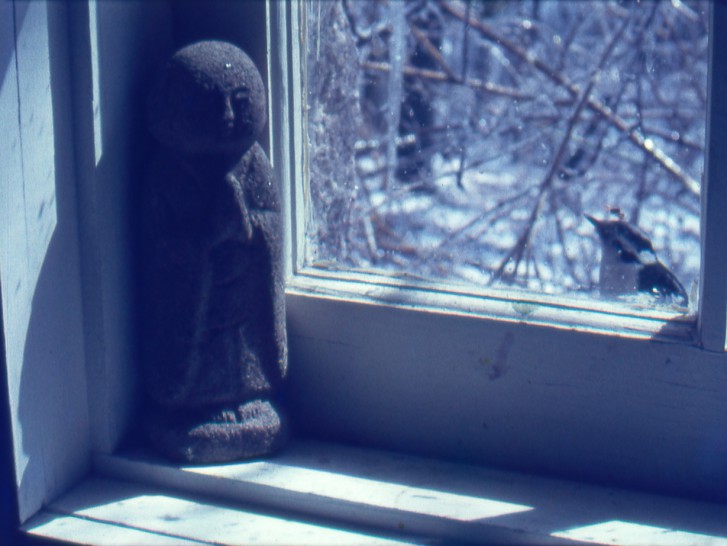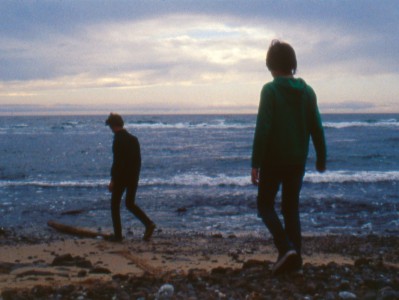
In the Stone House
New Shores
In the Stone House chronicles the life-changing four years Hiler spent in retreat from urban life with Nathaniel Dorsky in rural New Jersey. Disillusioned with the New York film scene, Hiler and Dorsky searched for a simpler, more spiritual way of life focused on art-making and proximity to nature. Far from a monastic seclusion, however, the filmmakers’ idyll was frequently interrupted by welcome city friends escaping to their house, dissolving the boundaries between the two poles.
Following the course of three seasons, Hiler records everyday events in the country, along with trips to Manhattan and Queens to visit with family and friends. Although In the Stone House was shot at the same time Dorsky was filming Hours for Jerome, Hiler edited his film many years later. Similar to New Shores, Hiler was able to reconstruct a temps perdu and capture the magical poignancy of memory, delicately paced by pauses of black leader which offer thoughtful breaths between each vibrant scene.
A companion work of sorts to In the Stone House, New Shores is partially a record of Hiler and Nathaniel Dorsky’s 1972 move to the West Coast. Blending a rich variety of styles and techniques with masterful editing, Hiler juxtaposes intimate scenes—moments and portraits from his life with Dorsky and friendship with poet Anne Waldman in particular—with meditative landscapes, seascapes and intimations of the changing seasons. An extended static shot of a plume of smoke rising from a shipping boat counts among Hiler’s most beautiful, rapturous images. New Shores fathoms the deep joy of discovery, the excitement and fear of life changes, and the bittersweetness of returning to the past, realizing one can never go home again. Hiler takes the title of the film from his idol Douglas Sirk's 1937 German film Zu neuen Ufern, or To New Shores. Hiler: “That film also deals with displacement, chasing pleasures to escape the overall atmosphere of imprisonment and a final capitulation.”








